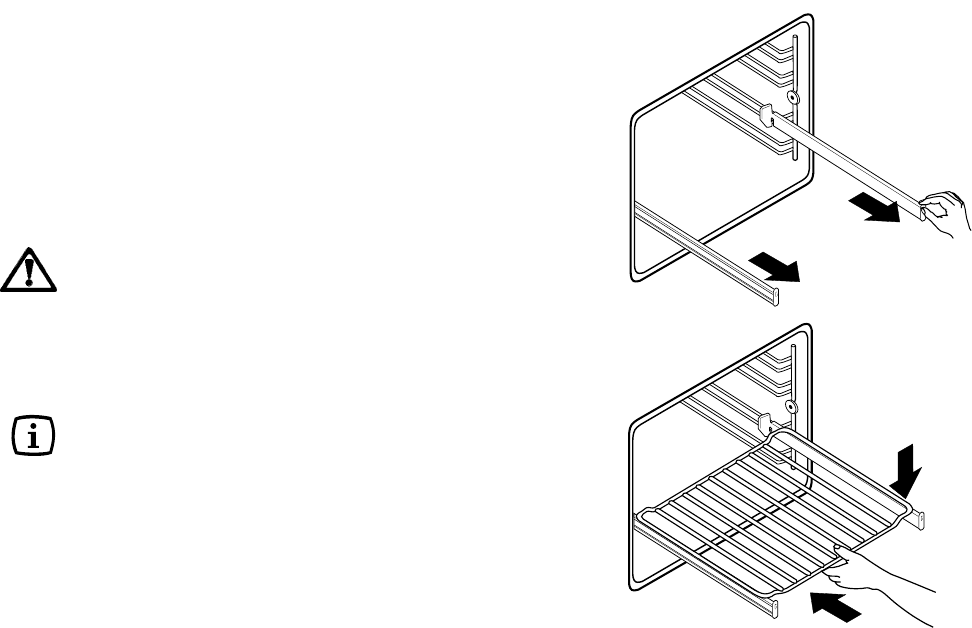
9
Condensation and steam
When food is heated it produces steam in the same way
as a boiling kettle. The oven vents allow some of this
steam to escape. However, always stand back from
the oven when opening the oven door to allow any
build up of steam or heat to release.
If the steam comes into contact with a cool surface on
the outside of the oven, e.g. a trim, it will condense and
produce water droplets. This is quite normal and is not a
fault with the oven.
To prevent discolouration, regularly wipe away
condensation and also soilage from surfaces.
Cookware
Use any oven proof cookware which will withstand
temperatures of 250°C.
Baking trays, oven dishes, etc. should not be placed
directly against the grid covering the fan at the back of
the oven, or placed on the oven base.
Do not use baking trays larger than 30 cm x 35 cm (12
in x 14 in) as they will restrict the circulation of heat
and may affect performance.
The effects of dishes
on cooking results
Dishes and tins vary in their thickness, conductivity,
colour, etc. which affects the way they transmit heat to
the food inside them.
A Aluminium, earthenware, oven glassware and bright
shiny utensils reduce cooking and base browning.
B Enamelled cast iron, anodized aluminium, aluminium
with non-stick interior and coloured exterior and dark,
heavy utensils increase cooking and base browning.
Hints and Tips
Telescopic shelf supports
Shelf level 2 is fitted with telescopic shelf supports.
1. Pull the right and left hand telescopic shelf supports
completely out, as shown in the diagram.
2. Place the shelf or the grill pan on the telescopic shelf
supports, as shown in the diagram, then gently push
them all inside the oven.
Do not attempt to close the oven door if the
telescopic shelf supports are not completely inside
the oven. This could damage the door enamel and
glass.
F


















